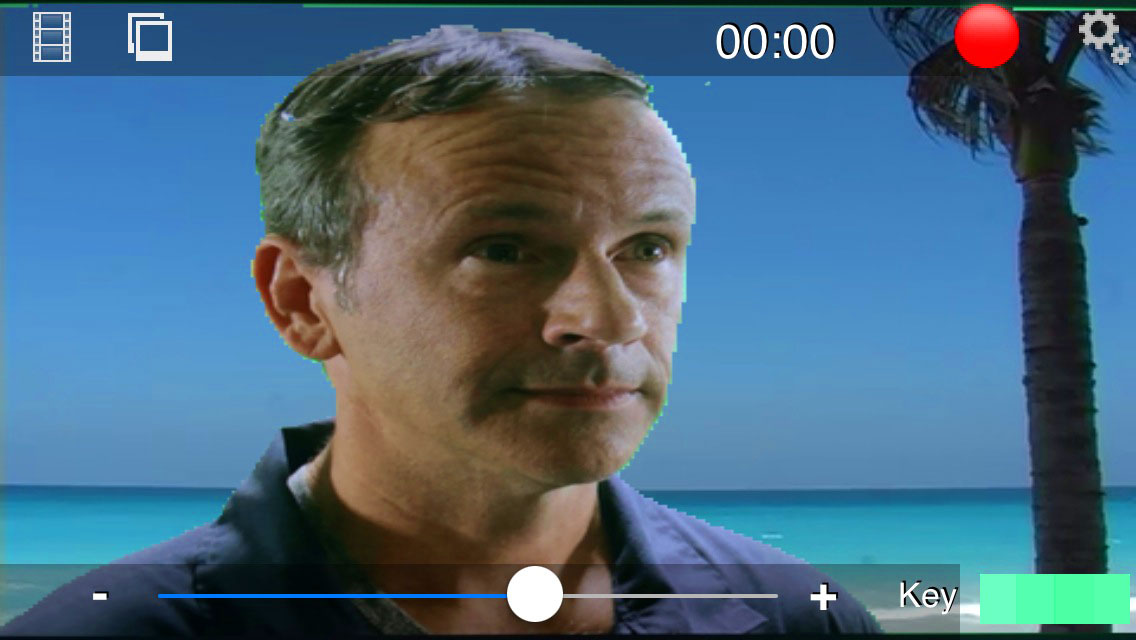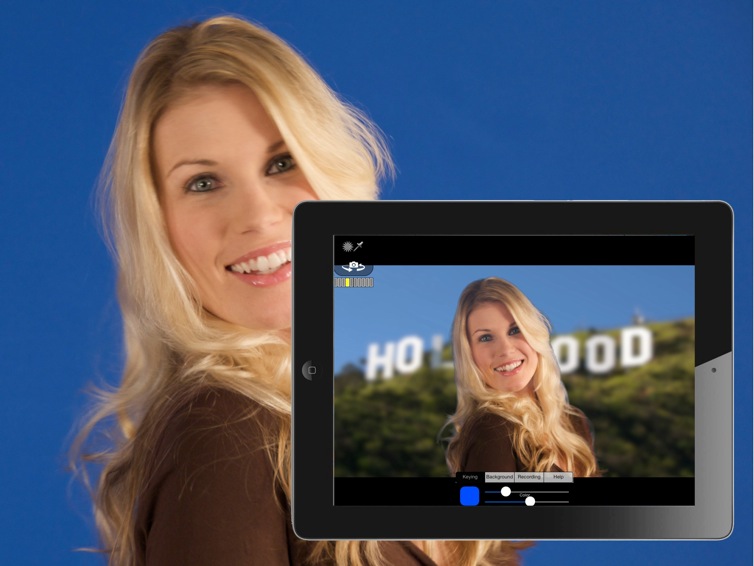Welcome back green screeners! As you may recall, last week I explained how green screens help filmmakers to composite (combine) multiple layers of imagery. Don’t remember that? Here’s a 13 word reminder (not including “presto”): Shoot actor against green screen, remove green in post, add a new background — Presto! While the green screen process sounds simple enough, there are a few technical hurdles you’ll need to jump, and thanks to some brilliant app developers, your iThings will help you jump higher.
Last week I proclaimed my love for an awesome app called Green Screener, a tool designed to measure and clearly display luminance values in order to help you light your green screen evenly (and achieve beautiful composites). Now let’s look at another problem that needs solving: shot alignment. To understand the problem, let’s revisit at last week’s example (with a twist):
On day one, you decide to use an elevated camera to shoot the side of a cliff with a distant army marching in the valley bellow. On day two, you position a camera low to the ground to film a nervous looking actor in front of a green screen. Then, in post-production, you composite the two together. You had HOPED to create a shot in which the nervous actor is now seen standing on the cliff, observing the approaching army. However, because your camera positions don’t align (one was elevated, and the other was near the ground), the composite doesn’t work at all! It’s awful! Thank goodness this was only an example…otherwise I’d have to call your mom and explain this horrible composite.
In order for this shot to have worked, you would have needed to capture both shots from a similar angle. This is shot alignment. The more aligned your shots, the better the composite will look. So, how can you ensure good shot alignment while shooting your actors against a green screen? After all, you can’t see the intended background — it’s just green. Lots of green. Greeny green green.
iDevices to the rescue! I’m happy to report that there are several tools in the App Store that will perform LIVE green screen composites right on your mobile device. How does that help? Imagine being able to load your background imagery into your iPhone or iPad, pointing your device’s camera at your actor and green screen, and then seeing your actor composited into the background — LIVE. Now, simply by moving your iDevice around your set, you can find the best angle for shooting your actor, one that perfectly matches the background. Once you’ve found the right angle, move your video camera into place, and start shooting! Awesome-sauce!
Here are two apps that can composite live green screen video (there are more in the App Store, but these are my faves):
Green Screen Movie FX ($1.99) is simple to use with only a few controls. After launching the app, just point your device at your actor and tap the green screen background. The app instantly removes the green, replacing it with a default background. Naturally, you can load your photo or video backgrounds from your iPhone’s photo library (which is the whole point). If you have color or luminance variations in your green screen (there shouldn’t be — didn’t you read last weeks article?), you can continue to tap areas of your green screen that will be removed by the app (you can remove up to four colors). A slider controls the strength of the green screen removal. Higher settings work better on poorly lit green screens, but can eat into non-green portions of your image, such as your actor’s face. The app also offers settings to change the video quality, frame rate, focus mode, and more. Green Screen Movie FX is a solid app I rely on quite frequently, but there’s more fish in the sea…
Veescope Live Full ($2.99) provides far more control for fine tuning your composite, including the ability to reposition the background (a feature that has come in handy more than once). The app also lets you lock exposure, focus, and white balance. While writing this article, I discovered an exciting feature within Veescope Live Full I had never seen before. It’s called Light Guide, and it’s a light meter that displays luminance values as bands of gray and green. Sound familiar? It should. That’s the same function Green Screener (the app I covered last week) performs. I haven’t used Light Guide on set yet, so I can’t vouch for its accuracy, but I’m excited to give it a try. If you’re feeling frugal, look for a free version of this app called Veescope Live (no “Full”). It performs the same functions as the paid version, but watermarks your recorded videos. Wait… RECORDED VIDEOS? What chu talkin bout, Taz?
I’m recommending these apps as shot alignment tools, however, both apps can RECORD videos. That means you can actually shoot live green screen composites directly to your device, then share or edit them right away. I didn’t mention this at first because the quality of the composites isn’t anywhere close to professional. That said, if you’re just looking to have a quick bit of fun, and you don’t need top-quality results, recording with these apps may be all you need! No harm in trying, right?!
There’s always more to learn about creating great green screen composites (i.e., lens choices, matching lighting, compositing plugins, color correction, etc.), but I’m hoping the apps I’ve shared will help get you going (or improve your existing workflow).
And remember, shoot carefully because “it’s not easy being green screen.” Yes, I waited a week to type that. You’re welcome, universe.







